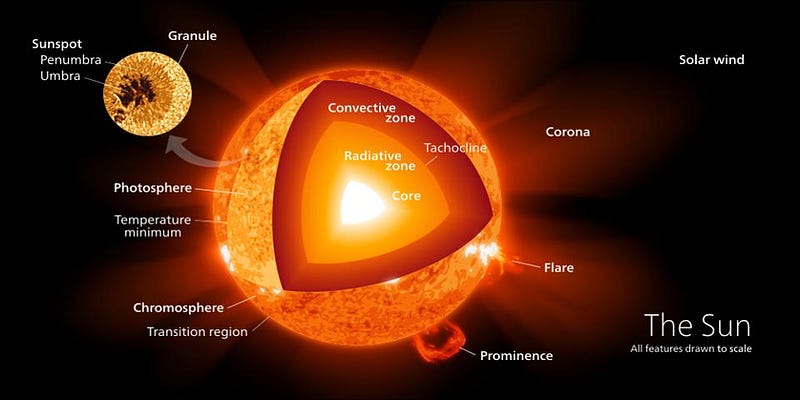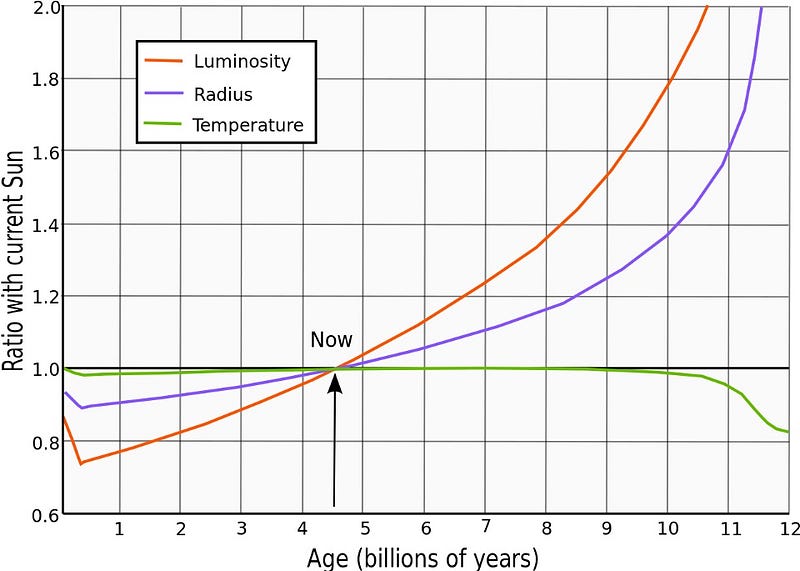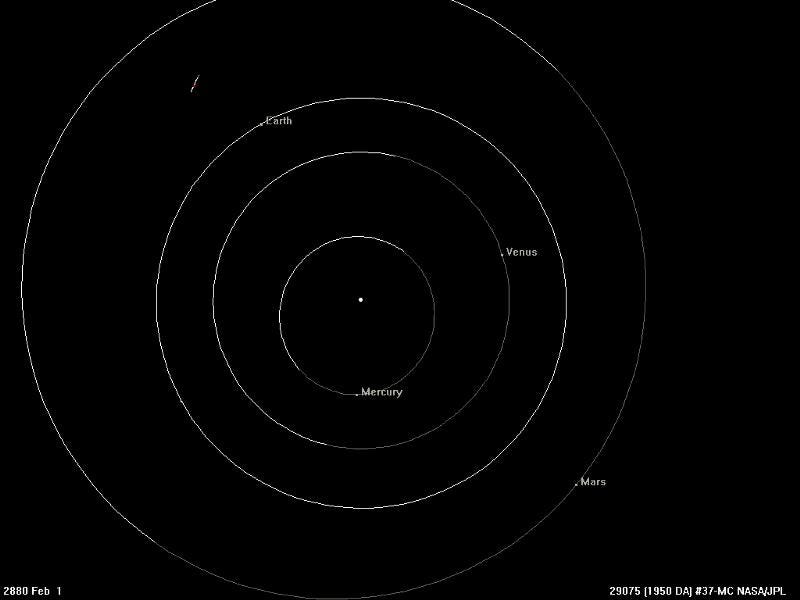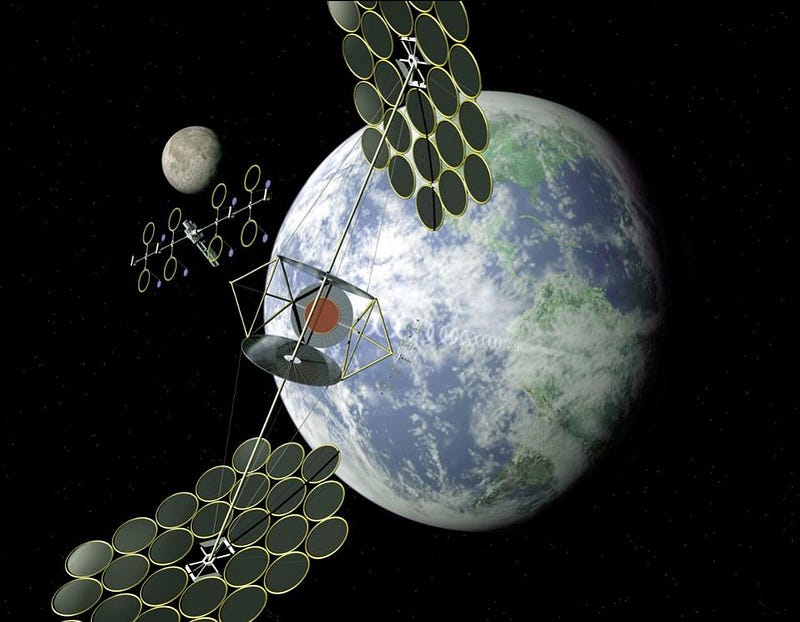Ask Ethan: Could we save the Earth by migrating it away from the Sun?

Someday, the Sun will heat up enough to boil our planet’s oceans. Could moving the entire Earth away save us?
“I would argue that in any habitable zone that doesn’t boil or freeze, intelligent life is going to emerge because intelligence is convergent.”
–Simon Conway Morris
Someday, in the distant future, the Earth’s oceans will boil, destroying all life on the planet’s surface and potentially rendering Earth completely inhospitable. It’s the type of global warming that no human can avert: the gradual warming that the Sun experiences by burning its core fuel over its lifetime. But there may be a way to keep the Earth inhabited if we plan a very long-term solution: migrating the entire Earth. Is this really plausible, though? That’s what Mathieu Nisen wants to know:
I want to dream a bit: do you think it could be physically feasible to migrate the earth’s orbit with our current knowledge in science?
To find out, we need to figure out how hot it’s going to get, and how fast, in order to move the Earth quickly enough to save it.

The way any star gets its energy is by fusing lighter elements into heavier ones in its core. Our Sun, in particular, fuses hydrogen into helium in regions where the core temperature exceeds 4,000,000 K. The hotter things get, the faster the rate of fusion; the very center of the core may be as hot as 15,000,000 K. This rate is almost perfectly constant, but not quite. Over very long periods of time, the percentage of hydrogen-to-helium in the core changes, causing the interior to heat up a little bit more over billions of years. When it heats up, three things happen:
- It gets more luminous, meaning it outputs more total energy over time,
- It swells slightly in size, increasing appreciably in radius by a few percent every billion years,
- And its temperature remains almost perfectly constant, changing by less than 1%-per-billion years.

All of this adds up to one uncomfortable fact: the amount of energy that reaches the Earth is very slowly increasing over time. For every 110 million years that pass, the solar luminosity increases by about 1%, which means that the energy reaching the Earth also rises by 1% over that exact same time. Back when the Earth was four billion years younger, our planet received barely 70% of the energy we do today. And after another one-to-two billion years, if we do nothing else to mitigate it, eventually this increase will cause a severe problem for Earth. At that point, we will hit a mean surface temperature of 373 kelvin (100 °C / 212 °F). In other words, at some point, the Sun will become so hot that the Earth’s oceans will boil.

So how can we mitigate it? There are a few potential solutions:
- We can set up a series of large reflectors at the L1 Lagrange point, preventing some of the incident light from reaching the Earth.
- We can geoengineer the atmosphere/albedo of our planet to reflect more light and absorb less.
- We can de-greenhouse our planet, removing molecules like methane and carbon dioxide from the atmosphere.
- We can abandon Earth and focus on terraforming outer worlds, such as Mars.

Any of these would work, in theory, but would also require a tremendous amount of effort and ongoing maintenance.
However, the solution of migrating the Earth to a more distant orbit would be permanent! And although we’d have to push our orbit out quite considerably to keep temperatures constant, timescales of hundreds of millions of years give us plenty of time, if we need it. To cancel out an effect of a 1% increase in the luminosity of the Sun, we’d need to push Earth an additional 0.5% away from the Sun; to cancel out an increase of 20% (what we expect over the next 2 billion years, total), we need the Earth an extra 9.5% more distant than we are now. Instead of the Earth being a mean distance of 149,600,000 km from the Sun, we’d be looking at more like 164,000,000 km.

This is going to take a lot of energy! To move the Earth — all six septillion (6 × 10²⁴) kilograms of it — that extra distance away from the Sun is going to change our orbital parameters by quite a bit. If we were to push Earth’s mean distance from the Sun out to 164,000,000 km (102 million miles), there would be some significant changes we’d notice:
- It would take an extra 14.6% longer for the Earth to complete a single revolution around the Sun.
- To maintain a stable orbit, our orbital speed would have to slow down, from 30 km/s to 28.5 km/s.
- If the period of Earth’s rotation stayed the same (24 hours), we’d have 418 days in a year, instead of 365.
- The Sun would appear slightly smaller in the sky — by about 10% — and the Sun’s effects on the tides would weaken by a few centimeters.

But in order to get the Earth out that far, we’d need to make a very big energetic change: we’d need to alter the gravitational potential energy of the Sun-Earth system. Even accounting for all the other factors, including the slower-moving Earth around the Sun, we’d have to change the Earth’s orbital energy by 4.7 × 10³⁵ Joules, which is the equivalent of 1.3 × 10²⁰ Terawatt-hours: about 10¹⁵ times humanity’s total annual energy supply. You might think that given two billion years would help, and it does, but only a little. We would need about 500,000 times the amount of energy that humanity presently generates today, globally, all pumped into migrating the planet outward in order to migrate the Earth to a safe, consistent distance.

The conversion technology is the least of our worries; the biggest concern is more fundamental: how do we get all that energy? Realistically, there’s only one place that has enough for those needs, and that is the Sun itself. At present, the Earth receives about 1,500 Watts of power per square meter from the Sun. In order to obtain enough power to migrate the Earth in the right amount of time, we’d need to build an array (in space) that collected that entire 4.7 × 10³⁵ Joules of energy, evenly, over a time period of two billion years. That means an array that’s 5 × 10¹⁵ square meters in size (and 100% efficient), or the equivalent of the entire surface area of ten Earths.

So to migrate the Earth to a higher, safe orbit, that’s what it takes: five billion square kilometers of a 100%-efficient solar array, whose energy goes entirely into pushing the Earth into a more distant orbit around the Sun for two billion years. Physically possible? Absolutely. With current technology? Not a chance. And is it practically possible? Almost definitely not, at least not with what we currently know. The reason that migrating the entire planet is so difficult is twofold: because of how strong the Sun’s gravitational pull is and how massive the Earth is. But this is the planet we have and the Sun we have, and the Sun is going to heat up, regardless of what we do. Until we find a way to gather and utilize that massive amount of energy, we’re going to need other strategies if we want to survive the ultimate global warming apocalypse!
Send in your Ask Ethan questions to startswithabang at gmail dot com!
Ethan Siegel is the author of Beyond the Galaxy and Treknology. You can pre-order his third book, currently in development: the Encyclopaedia Cosmologica.




